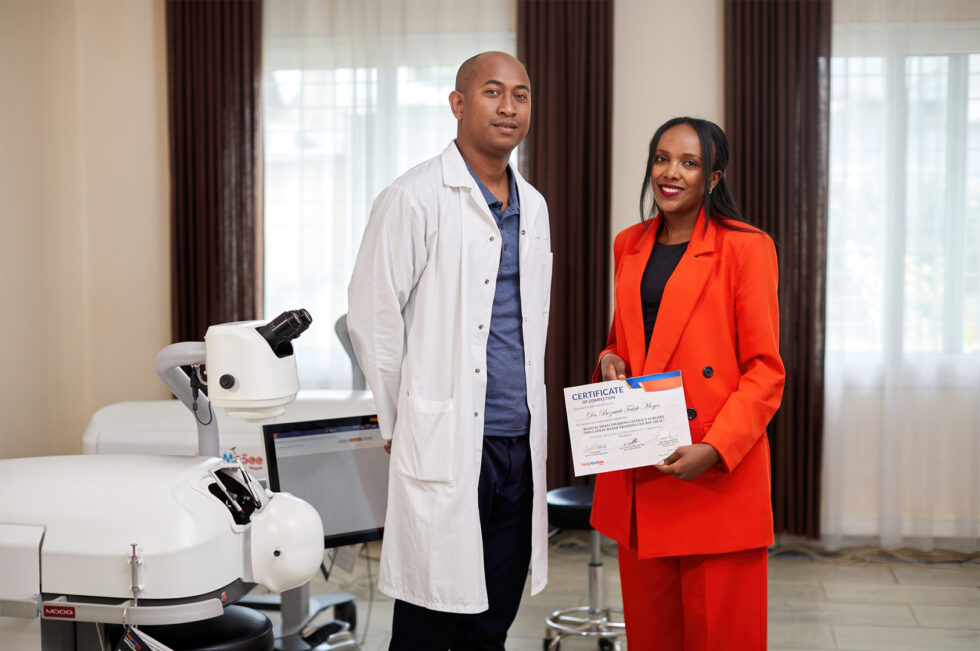Cataract surgery is an intricate procedure that requires years of training and skills acquisition. Although traditional training methods such as theoretical instruction, observation, and hands-on surgical experience are critical, advancements in simulation-based learning are reshaping ophthalmic training. Virtual reality (VR) models allow aspiring cataract surgeons to practice and perfect their skills in a risk-free environment.
Simulation-based training facilitates the development of surgical competency with active learning. Trainees perform tasks and manage various simulated surgical scenarios repeatedly, strengthening the neural pathways associated with skills acquisition. Simulated surgery environments also help trainees improve their hand-eye-foot coordination and enhance memory encoding and retrieval to optimize learning outcomes and expand their skillset and knowledge base.
Additionally, repeated practice in a simulated environment allows trainees to achieve proficiency, translating to greater confidence during actual surgeries. Courses that teach surgical complications management help trainees develop critical surgical management skills, enabling them to handle complications effectively in a real-life surgical setting.

TECHNOLOGY MATTERS
Several cataract surgical simulators are available, each with a unique approach to teaching technique proficiency and surgical dexterity. These technologies accelerate the learning curve and complement preparedness in the OR for complicated clinical situations and for performing surgery in low-resource settings.
The HelpMeSee Eye Surgery Simulator is a VR-based simulator featuring high-fidelity spatial, visual, and tactile realism to replicate the complexities of ocular anatomy and provide a controlled environment for trainees to develop their surgical skills. Led by instructors, trainees perform procedures repeatedly, enhancing not only their surgical competence but also their confidence in managing surgical complications. The HelpMeSee Eye Surgery Simulator has been shown to significantly reduce suture-related surgical errors (1) and may lead to fewer errors in their earliest independent surgeries. (2) The system also supports trainees by offering immediate feedback during the simulation surgery such as real-time alert sounds when trainees make a mistake. Additionally, trainees can review their performance data and videos to identify mistakes and improve their techniques. They can also enhance their communication and decision-making skills, which are vital in the OR where clear communication can significantly impact patient outcomes.
One unique benefit of the HelpMeSee Simulation-based Training Program is its instructor-led VR training model. Verbal feedback from an experienced instructor has been shown to lead to lasting improvements in performance (3) and confidence levels compared to those who do not use a simulator. (4) In addition to developing their surgical skillset, real-time, external feedback from instructors enables enhances their ability to think critically in the OR and approach complications confidently.

EXPERT INSIGHTS
Dr. Kimaya Chavan, a consultant ophthalmologist, was a live surgery trainer for 2 years before starting her own private practice. Now, she’s also the HelpMeSee Lead Instructor in Mumbai, India. “When I used the HelpMeSee Eye Surgery Simulator for the first time, I was impressed by its tactile feedback,” she said. “It is a great tool to teach novice surgeons before hands-on patient experience to reduce surgical complications.”
Dr. Chavan also shared that having an instructor explain every surgical step in detail before trainees use the simulator and also facilitate a debrief at the end of their session. This is helpful for trainees to track their progress, and it allows them to ask questions about the surgical steps. “Students feel very confident after the course. They perform surgery with a positive mindset and make less complications, which give good results and visual outcomes for patients.”

Dr. Minal Shah Baldota, the HelpMeSee Chief Instructor, Americas, emphasized the program’s effectiveness. “The traditional teaching method involves ‘see one, do one, teach one.’ In a simulated environment, trainees get experience without harming any patients. In my experience, trainees learning on the simulator have completed anywhere between 300 and 500 cases in just 4 to 5 days. This sharply improves the learning curve.”
Both experts highlighted the advantages of simulation-based training, such as the ability to repeat surgical steps until proficiency is achieved, constant feedback from instructors, and the opportunity to practice without risking patient safety. “What is remarkable is that this is achieved with a zero rate of avoidable medical errors when the skills are transferred from simulation-based learning to the OR then when directly learning on real patients,” Dr. Shah Baldota said.
“The most important advantage of HelpMeSee simulation-based training is that students can repeat every step of cataract surgery numerous times until they achieve proficiency,” Dr. Chavan said. “By reaching out to maximum ophthalmologists and training them until they achieve proficiency in cataract surgery, we can contribute to achieving HelpMeSee’s mission of eradicating the cataract blindness backlog.”
